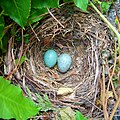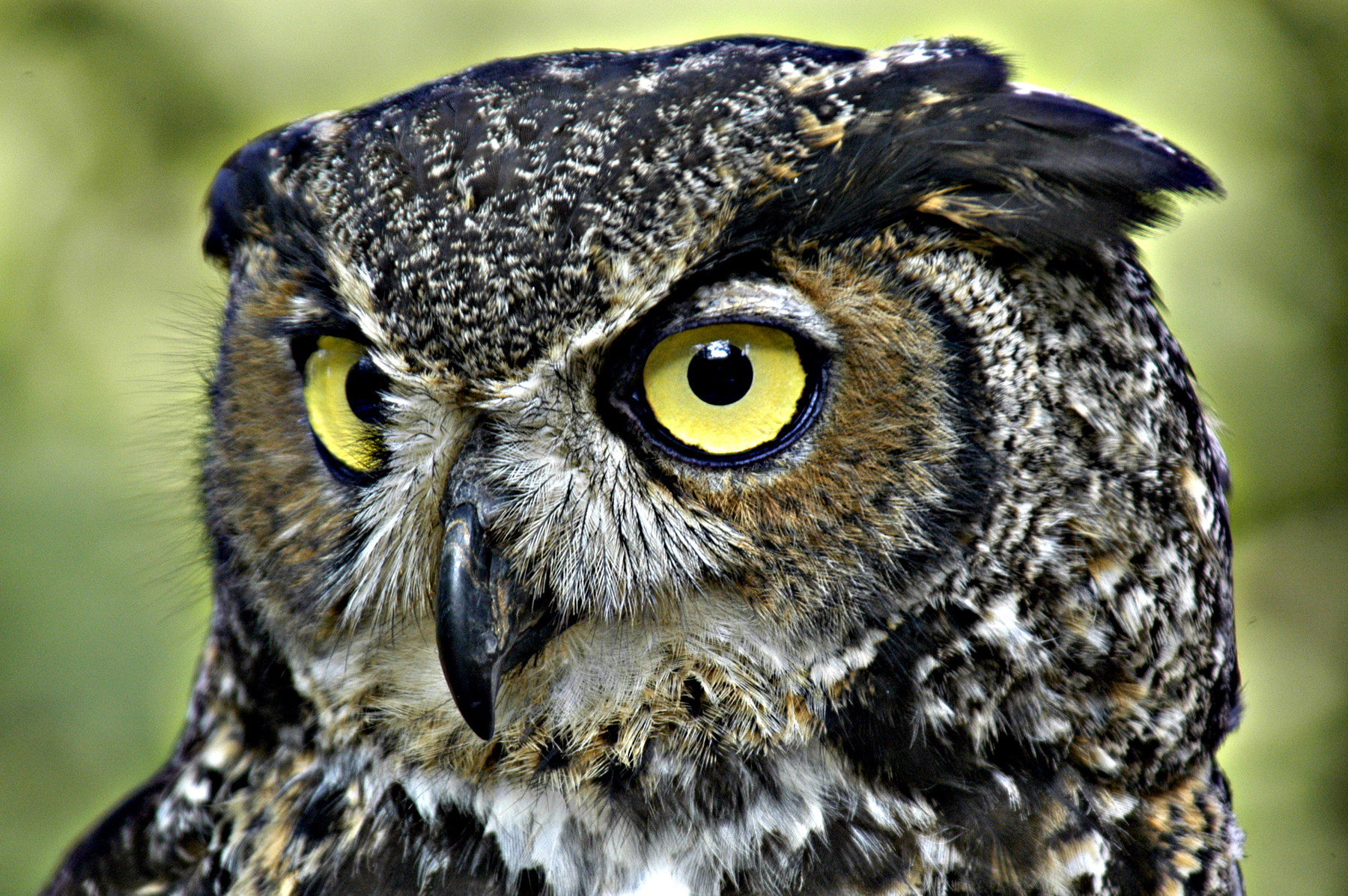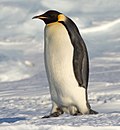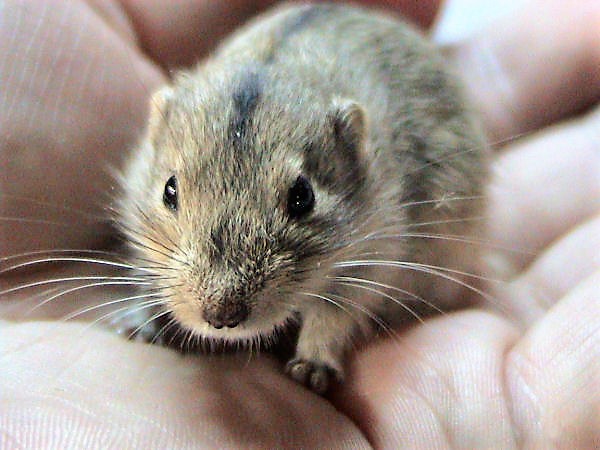 Birds Sleep in Nests
Birds Sleep in NestsI blame Big Bird for this one. The big yellow muppet may snooze away in his nest on Sesame Street but simply put, nests are for incubating eggs and raising fledgling birds, not sleeping. They are not a bird's "home." Birds that are not actively incubating eggs don't sleep in nests. Most (but not all) birds sleep by simply standing or "roosting" on tree branches. Some birds don't build nests at all.
 Daddy Long Legs are Spiders
Daddy Long Legs are SpidersDaddy long legs are the subject of a few popular myths. The largest myth is that they are spiders. Yes yes, someone is bound to point out in the comments that there IS a spider called the Daddy Long Legs (a.k.a. the long legged cellar spider) but what most people call a daddy long legs are the Harvestmen that you commonly find crawling in the woods. They are in the same class as spider i.e. they are arachnids but so are scorpions and wood ticks. Spiders belong to the order Araneae and Harvestmen belong to the order Opiliones. Lest you think I'm being too pickey, consider this example. It would be like calling a mosquito a "cockroach". This is exactly the same situation. I mean, hey, they're both in the scientific class Insecta, close enough right? No, sorry, they simply are not spiders.
An interesting sub-variant of the myth I hear a lot from kids is that daddy long legs are the most venomous spider in the world but their bite can't break through human's skin. I think this appeals to kids because they can pick up daddy long legs and feel cool that that they are handling something full of such deadly venom. Sorry, this one is a myth too as long as we're talking about harvestmen. Harvestmen have no venom. The Cellar Spiders that are sometimes called Daddy Long Legs do have venom but no toxicity tests have ever been performed on mammals because there is no way they could ever bite someone. The hosts of the show MythBusters were able to get a cellar spider to bite them (which must have been a feat in and of itself) and they suffered no ill effects.
 Earthworms are Good for the Soil
Earthworms are Good for the Soil I remember my mom teaching me this one. We were working in the garden and we'd find worms. She explained that worms till the soil and keep it healthy for the plants by aerating the soil. This is the common story we all know. This is also why for years people have tossed their extra worms into the woods when they finished fishing. They thought they were helping the woods. What we now know is that many worms are highly destructive in a woodland environment and dumping your bait in the woods can actually destroy the woods. The nightcrawlers sold as bait are invasive and eat soil leaf litter at an amazing rate. They are too effective at what they do. When earthworms burn through the limited organic duff layer present in our forests they prevent our woodland flowers and many other plants from growing. The woods where I work used to be filled with spring wildflowers when the nature center opened and now, forty years later the soil is practically bare each spring. The flowers simply cannot grow here anymore because worms have damaged the soil. Once established they can never be removed.
 Owls Can Turn Their Heads 360 Degrees or More
Owls Can Turn Their Heads 360 Degrees or MoreSince I work with live owls I get this one often. It seems many people believe owls can turn their heads completely around. I'm not sure where this comes from exactly. Cartoons perhaps? Owls certainly can turn their heads further around than humans but not 360 degrees. Most owls have about 270° of motion in their necks. The bulb-like shape of their large eyes cause them to be locked forward facing in their heads. Owls have to move their heads a lot to look around as they cannot move their eyes like we can.
 Frogs Cause Warts
Frogs Cause WartsThis one is easy. Yes, warts are in fact contagious. Warts in humans are caused by variants of the human papillomavirus or HPV which can be passed though contact. (Genital warts being the most infamous.) However, the bumps on a frog or toad's skin are not warts. They are simply bumps so, no, you can't get warts from touching a toad. It is probably a good idea to leave that frog or toad on the ground anyhow. Amphibians take in substances through their skin very easily. Sunscreen, hand cream, bug spray or even soap residue on your hands can be harmful to amphibians and make them ill if you pick them up.
 A Duck's Quack Does Not Echo
A Duck's Quack Does Not Echo Who came up with this insane idea? I don't think this myth is as popular as it once was but it still comes around once in a while. Let me be clear. Any sound can echo. The myth probably stems from the fact that ducks quack quietly and often in wide open spaces that don't reflect sound waves well. Why ducks though and not Chickadees or a snake's hiss? The real mystery is how this silly rumor started in the first place.
 Beavers Pack Mud with Their Tails and Live in Dams
Beavers Pack Mud with Their Tails and Live in DamsThere are lots of rumors about beavers but I've lumped these two together. Beavers use their tails to help swim and also as a signaling device. They slap it on the water as an audible signal. They do not use their tails to pack mud on dams and lodges. Speaking of dams and lodges. Beavers live in lodges, not dams. A dam is a solid structure built to create a pond deep enough to build a lodge. There is also no special kind of beaver called a "bank" beaver that build lodges on the banks of lakes instead of in the middle. Beavers are beavers, they sometimes choose to build along a bank and sometimes build in more open water.
 Penguins Tip Over when a Plane Flies Overhead
Penguins Tip Over when a Plane Flies OverheadThis bit of fiction seems to be newer in origin originating in the 1980s. It was popularized by the cartoon Bloom County. Lots of people seem to believe it simply because someone told them it was true. The idea is that if you fly low over a penguin colony, all of the birds will stand and watch in amazement and simply tip over as they crane their heads ever further backwards. The idea of penguins falling over in waves like bowling pins is humorous but purely fictional. In reality, penguins are afraid of planes and tend to run away in a panic rather than standing still and tipping over.
 Lemmings Commit Suicide by Jumping Off Cliffs
Lemmings Commit Suicide by Jumping Off Cliffs Most people put the blame for this one squarely with Disney. While they did not create the myth they popularized the misconception in the 1958 Disney film White Wilderness. The film features actual footage of mass migrations of lemmings jumping to their deaths. At least, it seems to, but the entire film is a fake made in a studio and is based on earlier misconceptions of lemmings. Lemmings do sometimes drown in rivers (just like other animals) but they don't reach some critical mass and decide to commit suicide en mass by jumping off cliffs.
 Seasons are Caused by Our Changing Distance from the Sun
Seasons are Caused by Our Changing Distance from the Sun This is an innocent enough mistake to make. Many people assume that the difference between summer and winter is that the earth is closer to the sun in summer and further in winter. The distance to the sun does in fact change over the course of the year. However, keep in mind that when it is summer in the Northern Hemisphere it is winter down in the Southern hemisphere. If seasons are caused by distance then it would be the same season everywhere on Earth at once. Seasons are in fact caused by the fact that the earth is tilted with respect to the plane of travel though space. When it is summer, your half of the earth is tilted toward the sun and the sunlight is more direct. It also appears higher in the sky and is out for longer. More sun + more concentrated energy = warmer weather. The opposite is true in the winter. Distance from the sun doesn't really enter into the picture.
Those are my top 10 nature myths. Leave comments if you know of others you think I overlooked!





5 comments:
Great post! Some of these myths were new to me.
I remember believing in many of these. Nice post! I hadn't heard of the duck's quack or penguin one before. lol
I can think of one other myth off the top of my head: Deer turn into Moose after a certain age. Though I don't think it's widely believed, I have heard it more than once and not just from kids.
Deer turn into moose? *facepalm*
Great post; I thoroughly enjoyed it!
Thanks Sam. It was had to pick my top ten. There's a lot of misconceptions out there. Maybe there will be a Son-of Top Ten Nature Myths Debunked some day.
Post a Comment